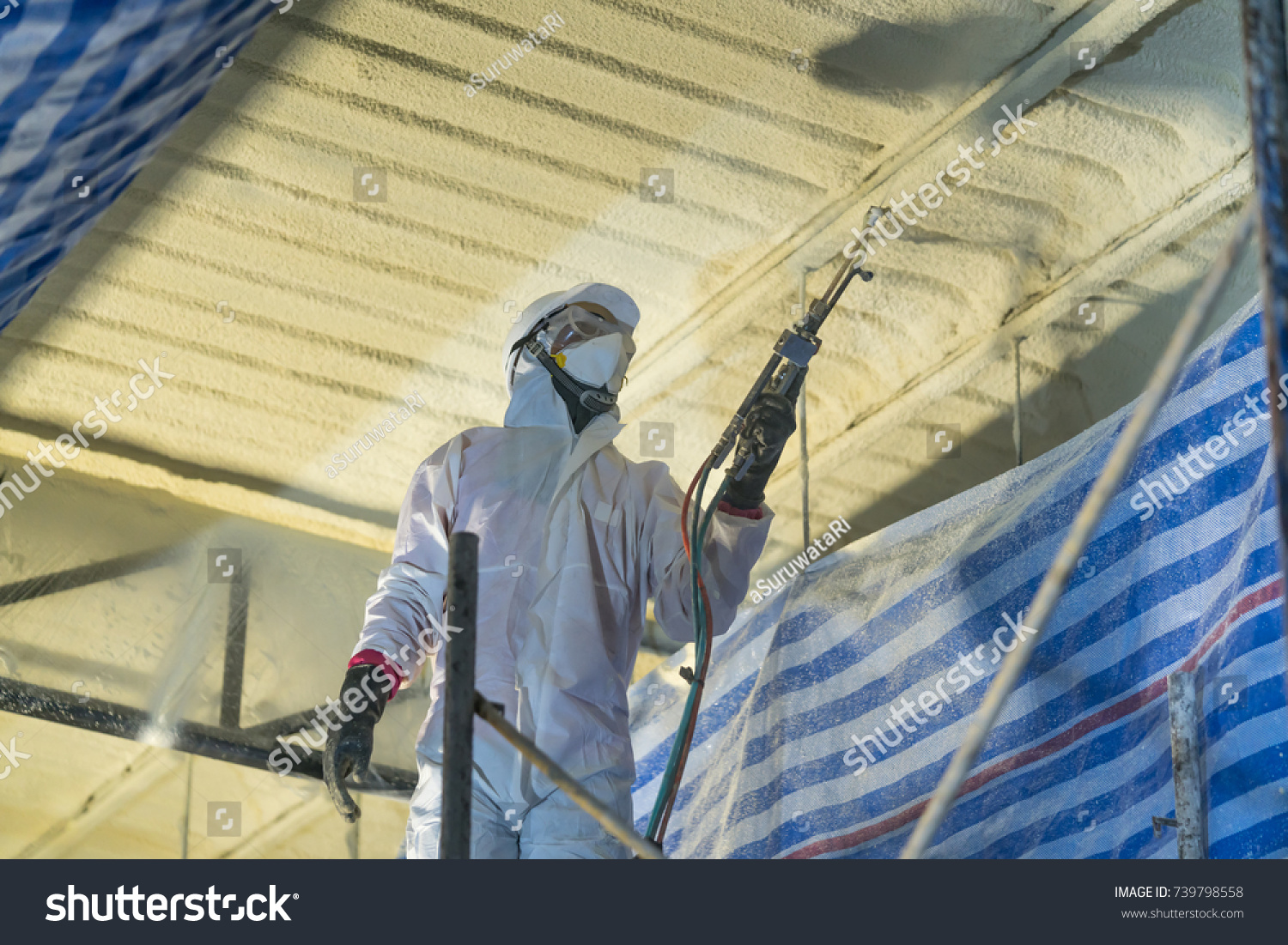Improve Indoor Air Quality with Proper Insulation

Indoor air quality is a major concern for many homeowners. The air we breathe inside our homes can significantly impact our health and well-being. Poor indoor air quality can lead to various health problems, including allergies, asthma, and other respiratory issues. Therefore, it is essential to take steps to ensure that the air inside our homes is as clean and healthy as possible.
One effective way to improve indoor air quality is through proper insulation. Insulation does more than just regulate your home’s temperature; it also plays a crucial role in keeping out pollutants and allergens. By sealing gaps and cracks where outdoor air can enter, insulation helps to create a cleaner indoor environment.
Additionally, certain types of insulation can reduce the presence of indoor pollutants. Proper insulation can minimize the spread of dust, mold, and other airborne particles. This results in a fresher, healthier indoor atmosphere that is safer for you and your family. In this article, we will explore how proper insulation can enhance your home's indoor air quality and provide practical tips for maintaining a clean, pollutant-free living space.
Understanding Indoor Air Quality
Common Indoor Air Pollutants
Indoor air quality is an essential aspect of a healthy home environment. Common indoor air pollutants include dust mites, pet dander, and mold spores. These tiny particles can cause respiratory issues, especially for those with asthma or allergies. Household products like cleaning supplies and paint can also release harmful chemicals known as volatile organic compounds (VOCs) into the air, affecting air quality.
Another significant source of indoor air pollution is smoke from cigarettes or even vaping. This not only stains walls and furniture but also releases harmful substances like nicotine and formaldehyde into the air. Cooking can also contribute to poor indoor air quality, as the fumes and particles released from gas stoves or burnt food add to the pollutant levels in your home. Knowing what pollutants are present can help you take steps to reduce their impact on your health and comfort.
Sources of Indoor Air Pollution
Several sources can contribute to indoor air pollution. One of the most common sources is inadequate ventilation, which allows pollutants to accumulate inside the home. Poor ventilation can trap stale air and harmful substances, leading to higher levels of indoor pollution. Building materials and furniture are another category to consider. Items like pressed wood or certain types of paint can release VOCs over time, degrading your indoor air quality.
Biological contaminants like mold, bacteria, and viruses can also thrive in humid areas of your home. These microorganisms can spread through the air and cause health problems. Combustion sources, such as gas stoves, fireplaces, and even candles, can also release pollutants that negatively impact air quality. Identifying these sources can help you address them more effectively and create a healthier indoor environment.
How Insulation Affects Air Quality
Preventing Outdoor Pollutants
Insulation plays a critical role in maintaining good indoor air quality by acting as a barrier against outdoor pollutants. Well-installed insulation helps to seal gaps and cracks in your home's structure, preventing pollutants such as pollen, dust, and car exhaust from entering. This keeps the air inside your home cleaner and reduces the risk of respiratory problems. Insulation also helps to keep your home temperature-controlled, which can minimize the need for opening windows and doors, further limiting the entry of outdoor contaminants.
Additionally, proper insulation can reduce the infiltration of moisture, which is essential in preventing mold and mildew growth. These fungi release spores into the air, which can cause or worsen respiratory issues. By keeping these pollutants out, insulation contributes to a healthier indoor environment.
Reducing Indoor Pollutants
Good insulation doesn't just block outdoor pollutants; it also helps to control and reduce pollutants generated inside the home. When insulation is installed correctly, it reduces the need for heating and cooling systems to work overtime, which can help lower the amount of dust and other particles circulated through your HVAC system. This can lead to cleaner indoor air.
Furthermore, insulation can help in maintaining a stable indoor temperature, reducing the likelihood of condensation. Excess moisture can lead to mold growth, a significant indoor pollutant. By keeping your home dry and well-sealed, insulation helps to create an environment less conducive to mold, mildew, and other harmful biological contaminants. This proactive approach to managing indoor air quality can make a noticeable difference in the health and comfort of your living space.
Choosing the right insulation and ensuring it is properly installed are vital steps toward improving indoor air quality in your home. By addressing both outdoor and indoor pollutants, you can enjoy a cleaner, healthier living environment.
Types of Insulation for Better Air Quality
- Spray Foam Insulation: Spray foam insulation is a top choice for improving indoor air quality. It creates a comprehensive seal that prevents both air and moisture from entering or escaping your home. This type of insulation fills all gaps and cracks, creating an airtight barrier. By preventing the infiltration of outdoor pollutants like pollen, dust, and car exhaust, spray foam insulation helps maintain a cleaner indoor environment. It also reduces the risk of mold growth by keeping moisture at bay, further contributing to better air quality inside your home.
- Fiberglass Insulation: Fiberglass insulation is another effective option for improving air quality. This type of insulation consists of fine glass fibers and is available in batts, rolls, or loose-fill. It is resistant to moisture and does not trap dust or allergens, making it a good choice for maintaining air quality. While it doesn’t seal as tightly as spray foam, it still helps to reduce air leaks and improve the overall efficiency of your HVAC system. Fiberglass is also non-combustible, adding an extra layer of safety to your home.
- Cellulose Insulation: Cellulose insulation, made from recycled paper products, is an eco-friendly choice that offers good thermal protection. This type of insulation is often blown into wall cavities and attics, filling small gaps and cracks where air can leak in. Cellulose has the added benefit of reducing air infiltration, which helps to keep indoor pollutants at lower levels. Because it is treated with fire retardants, it not only helps with air quality but also adds a layer of safety against fire hazards. Cellulose insulation is particularly effective in older homes where retrofitting is needed.
Additional Tips for Improving Indoor Air Quality
- Regular Maintenance and Cleaning: Maintaining clean indoor air means more than just choosing the right insulation. Regular maintenance and cleaning are crucial. Vacuum regularly to reduce dust, and use a vacuum with a HEPA filter to capture the smallest particles. Wash bedding, curtains, and other fabrics frequently to minimize allergens like dust mites and pet dander. Also, be sure to clean air filters in your heating and cooling systems regularly to ensure they are working efficiently and not circulating pollutants.
- Using Air Purifiers and Ventilation Systems: Air purifiers can be a great addition to your home, especially in rooms where you spend a lot of time, like the bedroom or living room. Look for air purifiers that have HEPA filters, which are designed to remove 99.97% of particles from the air. In addition, proper ventilation is essential for maintaining good indoor air quality. Use exhaust fans in bathrooms and kitchens to remove moisture and pollutants. If possible, invest in a whole-house ventilation system to ensure fresh air circulates throughout your home.
- Sealing Windows and Doors: Sealing windows and doors is another effective way to improve indoor air quality. Even tiny gaps around windows and doors can let in outdoor air and pollutants. Use weatherstripping or caulk to seal these gaps and keep indoor air clean. This also helps in maintaining the temperature inside your home, reducing the need for constant heating or cooling, which can stir up dust and other allergens. Regularly check these seals and replace them as needed to ensure they remain effective.
Conclusion
Improving indoor air quality is vital for maintaining a healthy home. From understanding common pollutants and their sources to knowing how insulation can help, it's clear that making informed choices can significantly impact the air you breathe. By exploring different types of insulation and implementing additional tips such as regular cleaning, using air purifiers, and sealing gaps, you can create a cleaner, safer living environment for your family.
When considering how to enhance your home's air quality, the right insulation can make a world of difference. Whether you choose spray foam, fiberglass, or cellulose insulation, each option offers unique benefits that contribute to a healthier indoor atmosphere. Don't overlook the importance of good insulation; it's a critical component in achieving better air quality and overall home comfort.
If you're looking to improve indoor air quality with the right insulation, we're here to help. Contact Atlas Insulation today for a free quote and expert advice tailored to your specific needs. Let our insulation services in South Florida assist you in making your home a safer, more comfortable place.





